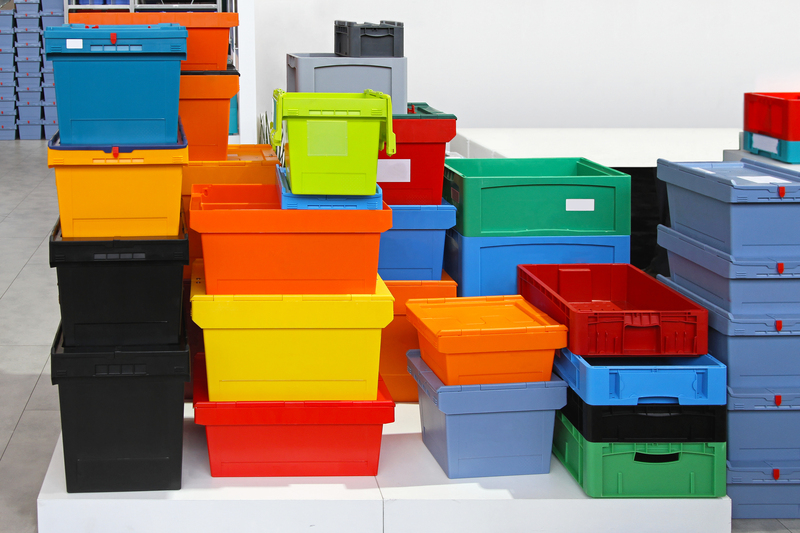Preserving Your Sofa for the Long Haul with Expert Storage Tips
When it comes to home furniture, few pieces are as central and beloved as the sofa. Whether it's a plush sectional in the family room or a sleek loveseat in the office, your sofa is likely a significant investment. It's the center of movie marathons, quiet reading afternoons, and lively gatherings. If you're planning a move, a home renovation, or simply need to declutter, knowing how to preserve your sofa for the long haul with expert storage tips is essential.
This comprehensive guide combines practical advice and industry expertise to ensure your sofa stays comfortable, stylish, and in top-notch condition--even when it's out of sight. If you're searching for the best ways to store your sofa, or looking for foolproof methods to protect and maintain your valued couch, read on!

Why Proper Sofa Storage Matters
Before we dive into helpful sofa storage hacks, it's important to understand why proper storage is crucial. Sofas are constructed from a blend of wood, metal, upholstery fabric, and various cushioning materials. Each of these elements can deteriorate or become damaged if not stored thoughtfully. Incorrect storage might result in:
- Mold and Mildew: Fabric and stuffing can absorb moisture, leading to unpleasant smells or unsightly growths.
- Fading and Discoloration: Exposure to sunlight or improper covering can fade fabrics and leathers.
- Structural Warping: Excess pressure or improper placement can cause sofa frames to twist or break.
- Pest Infestation: Rodents and insects are attracted to dark, quiet corners and can nest in your sofa if not properly protected.
- Permanent Indentations: Heavy items stored atop your couch can leave lasting imprints or deform its shape.
With these potential problems in mind, you can see why taking extra steps to preserve your sofa during storage is a wise decision. Next, we'll look at expert strategies for every phase of the process.
Preparing Your Sofa for Long-Term Storage
Clean Thoroughly Before Storing
Start by giving your sofa a deep clean. Removing dust, crumbs, oils, and hair prevents these elements from becoming breeding grounds for bacteria and odors. Here's what the experts recommend:
- Vacuum all surfaces, including under the cushions and in crevices, to remove loose debris.
- Spot-clean stains using a gentle fabric cleaner suitable for your upholstery.
- For leather sofas, use a specialized conditioner to keep the material supple and avoid cracks.
- Allow your sofa to dry completely before moving on to the next step to prevent moisture buildup.
Disassemble When Possible
Many modern sofas are designed for easier transport and storage. If your furniture allows, disassemble removable parts such as legs, armrests, or cushions. This makes moving and storing less cumbersome and reduces the risk of breakage. Be sure to:
- Keep all screws, bolts, and hardware in a labeled ziplock bag taped to a sofa part or stored securely.
- Wrap smaller components in protective padding to avoid scratches and damage.
Choose the Right Packing Materials
Invest in quality storage supplies to shield your sofa from dust and damp. Essential materials include:
- Breathable furniture covers or moving blankets. Avoid plastic wrap directly against fabric, as it can trap moisture and promote mold growth.
- Bubble wrap or foam padding for legs, arms, and hard edges.
- Mattress protectors or sheets to add an extra layer of defense against dirt and scratches.
Selecting the Best Storage Environment
Climate-Controlled Storage Units
For optimal sofa preservation, choose a climate-controlled storage unit. This keeps temperature and humidity levels consistent, which is crucial for avoiding warping, cracking, and mildew.
- If you're storing your sofa for several months or longer, climate control can be a game changer.
- Ensure the unit has good air circulation to reduce the risk of condensation.
Cleanliness and Pest Control
Opt for a storage facility that prioritizes cleanliness and pest management. A reputable place will have visible measures like traps, sealed entry points, and a no-food policy. For extra peace of mind, lay down pest-repellent sachets or cedar blocks beneath your sofa.
Positioning and Arranging Your Sofa in Storage
Keep It Raised
Store your sofa off the ground to allow airflow and guard against potential flooding or dampness. Use wooden pallets, blocks, or risers to lift the frame a few inches. This small step offers big protection in case of unexpected leaks or condensation.
Avoid Stacking and Overcrowding
Do not place heavy boxes or objects on top of your sofa, as this can deform the cushions or structure. Position the sofa against a wall or at the rear of your storage unit and allow space around it for air circulation. Overcrowding increases the risk of accidental tears or imprints.
Upright versus Flat Placement
Whenever possible, store your sofa in its natural, upright position. Only tilt it if absolutely necessary and for short periods. Laying it on its back or arms for extended times can lead to structural damage and flattened cushions.
Ongoing Care For Long-Term Storage
Regular Inspections
If your storage unit allows, drop by every couple of months. Check for:
- Signs of moisture or condensation
- Early pest activity or nest building
- Fading, discoloration, or weird odors
If you spot issues early, you'll be able to take action before any real harm is done.
Refresher Steps
- Re-tighten any loose bolts or screws
- Gently fluff cushions to prevent hard compressions
- Wipe down visible surfaces to keep dust at bay
Packing and Moving Day: Best Practices
When it's time to move your sofa into or out of storage, follow these expert tips:
- Lift don't drag: Dragging can cause fabric tears or damage to legs and frames.
- Use moving straps or dollies designed for heavy furniture.
- Protect corners and edges with extra padding to avoid banging or denting during the move.
- Enlist help--team lifting is always safer!
Upon Removal From Storage
- Unwrap and air out your sofa in a well-ventilated area before use.
- Inspect for mustiness or new stains; spot-clean as needed.
- Reapply leather conditioner or fabric protector before regular use for ongoing care.
Prolonging Sofa Life: Maintenance Tips Between Uses
Use Protective Covers Year-Round
Even outside of storage, regular use can wear down your sofa. Consider equipping your sofa with washable slipcovers or throws to protect from spills, pets, and general wear and tear.
Cushion Rotation
Rotate and flip sofa cushions every few months. This prevents uneven sagging and flattening, especially in the spots used most often.
Keep Out of Direct Sunlight and Heat
Whenever possible, arrange your furniture away from windows and heaters to minimize fading and drying out of materials.

Common Mistakes to Avoid When Storing Your Sofa
- Skipping a thorough cleaning: Dirt and crumbs left behind attract pests and create odors.
- Using non-breathable plastic wrap directly on fabric or leather can lock in moisture and prompt mold growth.
- Piling heavy objects on top or resting items along armrests and cushions--a sure way to warp your sofa's shape.
- Forgetting to check on your stored sofa regularly for signs of trouble.
- Neglecting essential disassembly steps, resulting in broken parts or bent hardware once storage ends.
Summary: Sofa Storage Success For the Long Haul
Your sofa is more than furniture--it's a touchstone of comfort and a focal point in your home. Preserving your sofa for the long haul with expert storage tips ensures that this investment remains in pristine condition, ready to offer relaxation and beauty for many years to come.
To recap the best practices for storing your sofa safely:
- Clean and dry your sofa thoroughly before storing.
- Disassemble removable parts and keep hardware organized.
- Use appropriate packing materials and avoid non-breathable plastic covers.
- Choose a climate-controlled, pest-free storage unit if possible.
- Raise your sofa off the floor and allow for air circulation.
- Never stack items on top--always keep your sofa upright and support its shape.
- Schedule periodic inspections for optimal maintenance and peace of mind.
By following these expert sofa storage techniques, you'll safeguard one of your most valuable home assets through any transition--whether a cross-country move, home renovation, or simple seasonal storage. Take care now to relax later on a sofa that looks and feels as good as new.
Looking for more residential storage tips? Explore our other guides or consult with a professional moving and storage service for personalized advice tailored to your furniture and unique situation!
Related Resources
- How to Store Other Upholstered Furniture Successfully
- The Ultimate Guide to Preparing for a Move
- Climate-Controlled vs. Standard Storage: What's Right for You?
By implementing these expert tips, you'll not only prolong the life of your sofa during storage, but also ensure it remains a beloved piece in your home for years to come.